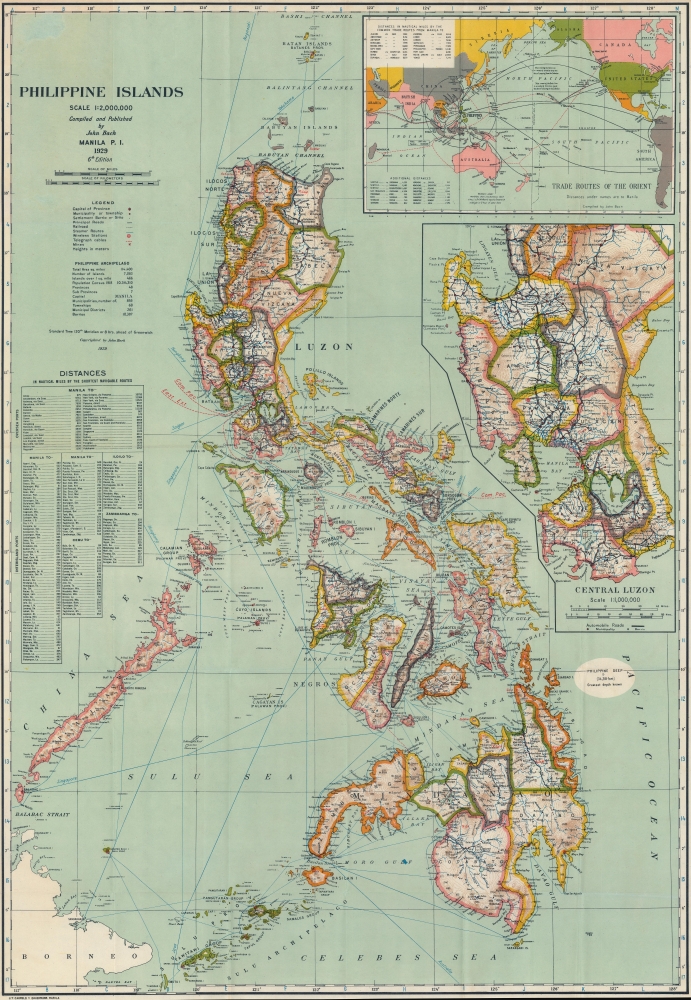This item has been sold, but you can get on the Waitlist to be notified if another example becomes available, or purchase a digital scan.
1929 Bach Map of the Philippines
PhilippineIslands-bach-1929
Title
1929 (dated) 36.25 x 25.25 in (92.075 x 64.135 cm) 1 : 2000000
Description
A Closer Look
Islands are identified, and provinces are delineated in Luzon and Mindanao. Cities, towns, and villages are illustrated along with roads and railroads on all major islands. Natural resources are marked, including gold, iron, chromite, copper, and coal. Lines mark sea lanes between the islands and international routes to Singapore, Saigon, Hong Kong, Japan, and Guam, along with many others. An inset of central Luzon occupies nearly half the right border and details the transportation network between San Fernando and Lucena. In the upper right, a second inset highlights trade routes across the Pacific and through the Indian Ocean to Aden. A distance table appears along the left border and notes distances to international ports and interisland routes.Historical Context
In 1929, the Philippines was under American colonial rule, with a population of around 13 million. The late 1920s were a period of relative peace and stability following several years of political unrest and armed conflict. This allowed industry and commerce to grow exponentially. However, tensions between the ruling American government and Filipino nationalists were still high and calls for independence continued to grow. Moreover, in the year this map was issued, the Great Depression (1929 - 1939) began in the United States, driving the colony's major trading partner and the global economy in general into dire straits. At the same time, the Philippine nationalist movement grew stronger, with leaders such as Manuel Quezon advocating for self-rule and greater autonomy from American colonial rule. The economic crisis exposed the limitations of the colonial government's ability to address the country's economic challenges, further fueling demands for independence. The Commonwealth of the Philippines was established in 1935, which granted the country more autonomy and a pathway towards independence.Publication History and Census
This map was compiled and published by John Bach in 1929 and lithographed by Carmelo and Bachmann in Manila. It is the sixth edition of John Bach's map of the Philippines. This map is well represented in institutional collections.Cartographer
John Bach (1872 - 19xx) was a Norwegian-American cartographer. Born in Norway, Bach arrived in New York in March 1893 and became a citizen on January 10, 1902. On April 20, 1902, he was appointed to the civil service of the Philippine Islands as a member of the Bureau of Coast and Geodetic Survey. Throughout his many years working for the Coast and Geodetic Survey, Bach produced numerous maps of the Philippines for the Survey. By 1917, Bach was the chief of the drafting division in Manila. It is unclear exactly how long Bach stayed in the Philippines, but he was there until at least 1927, because of a record of him and his family traveling from Manila to New York City in July 1927. He appears in the 1930 U.S. Census as an employee of the U.S. Coast and Geodetic Survey. Bach married an American, with whom he had two daughters. More by this mapmaker...




